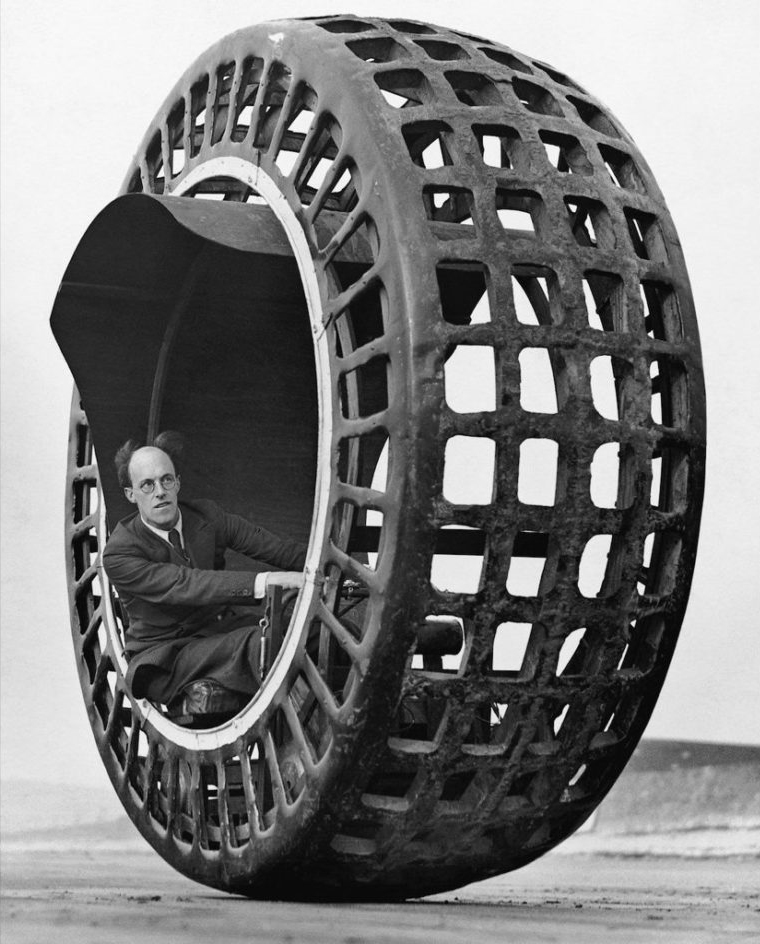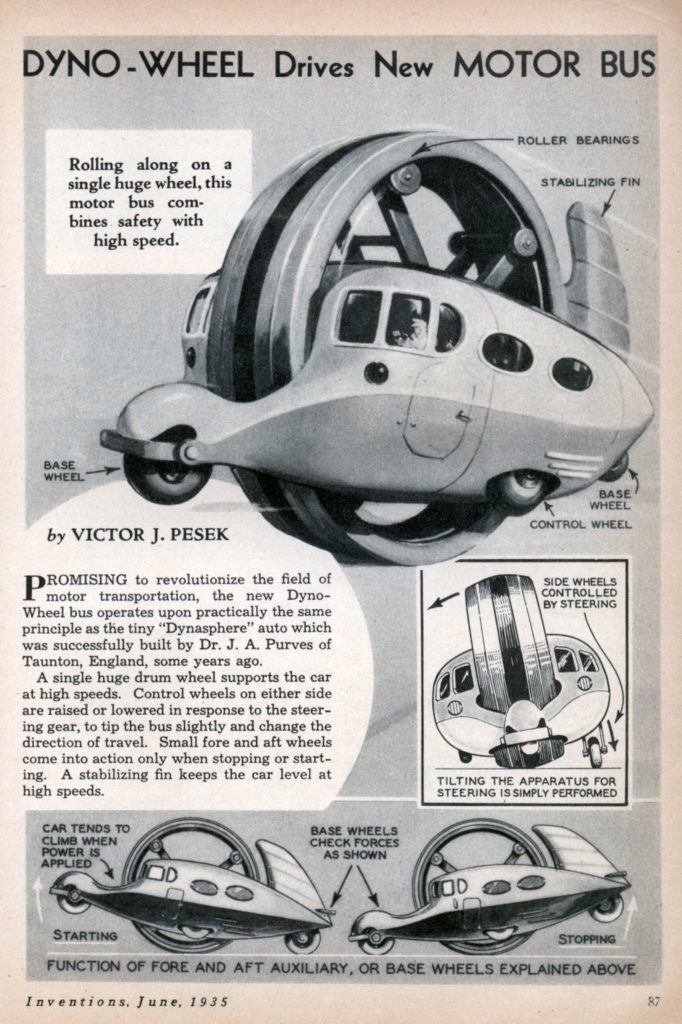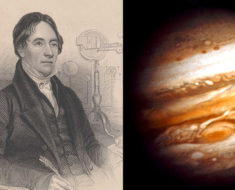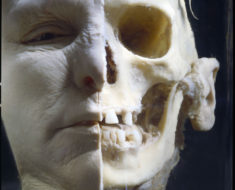
The Dynasphere—a one-wheel wonder.
In the early 1930s, the car of the future had just one wheel. That wheel, in fact, was the entire car. The Dynasphere, as inventor Dr. J. H. Purves called it, offered a cabin within the circumference of the wheel for the driver and passenger to sit.
The June 1932 issue of Modern Mechanics explained how it worked:
Inside the wheel, on either side, tracks run completely around. The motor is geared to the track so that, when the engine is started, the motor pulls the track toward it and so starts the wheel in motion. Center of gravity is low to prevent the wheel from tipping over.
The weight of the motor and driver is sufficient to keep them always parallel with the ground—if the driving apparatus were sufficiently light, the motor might conceivably climb up the geared track instead of pulling it and the attached wheel around.
Speeds of thirty miles an hour, with two occupying the seat, have been comfortably attained. The lattice-work in front of the driver’s eyes disappears when the wheel is in motion, flashing past so rapidly that he has a good view of the road he is traveling.”
Purves made two prototypes. The larger one featured a gasoline motor capable of 2.5-horsepower—enough to propel the thousand-pound wheel. The other ran on electricity.
In 1935, Purves developed a bus version to hold more passengers. Had it not been for difficulties in steering and braking, perhaps one-wheeled electric cars and buses would’ve taken over the roads and changed the course of automotive history.

Purves created a Dynasphere bus. From Inventions, June 1935.
Watch the Dynasphere in action below, and imagine what could’ve been.




![Premature Burial [Public domain], via Wikimedia Commons-Illustration for Edgar Allan Poe's story The Premature Burial by Harry Clarke (1889-1931), published in 1919.](https://www.weirdhistorian.com/wp-content/uploads/2017/09/premature-burial-crop-235x190.jpg)

